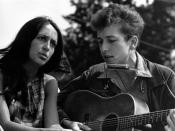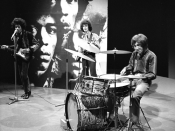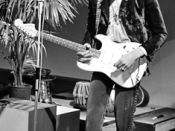During the 1960's, various events in the United States of America, from the assassinations of J. F. Kennedy and Martin Luther King to the Vietnam war and Cuban missile crisis, created civil unrest resulting in protests, marches and riots, which was reflected in the music of the period. Views on other events around the world such as the riots in Paris, the Cold War and the Russian invasion of Czechoslovakia where expressed through the language of music. Bob Dylan began as a protest singer, setting his lyrics (sometimes expressing anti-war views as in "Masters of War") to traditional folk tunes, country numbers, or blues.
Dylan later went onto play with a rock band, bringing the folk style to rock from his earlier days as a protest singer, and because of this most of his work is musical poetry rather than the standard 'boy meets girl, boy loves girl, boy loses girl, boy gets girl back' formula of 60's popular music.
Another social element of the 60's affected music: drug culture. Drugs were becoming increasingly popular in the popular music scene of the time, in particular rock, giving birth to Psychedelic rock. One drug in particular that influenced rock musicians at the time was LSD, a powerful drug that creates hallucinations, distorting sense of time, hearing, vision, touch, smell, taste and reasoning. This is clearly reflected in the 1966 album 'Revolver' by the Beatles. The aim of psychedelic, or acid rock was to recreate the effects of drugs through music, often including strange lyrics and use of irregular instrumentation, reflected in the use of an Indian Sitar on the last track of 'Revolver'.
The quest to re-create the effects of drugs on the human body through music led to great advances in recording technology, creating various effects such as fuzz,



Well written but needs sources
you can't write a history paper without sources or citations, but forget about that for a second.
perhaps to delve deeper into the subject one could look at the progression described in relation to the corperate music industry, and their actions to promote, sustain, block, or destroy various musical movements and expressions. how do these distribution issues apply to the advancement of music as an art?
8 out of 8 people found this comment useful.